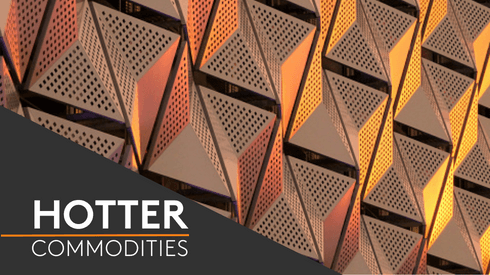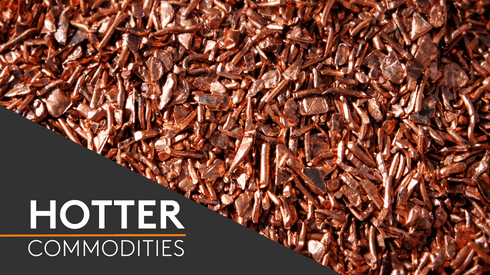The backdrop over the past year was largely one of slow recovery in demand in comparison to the optimistic outlooks stemming from China’s reopening, which had been curbed by an unraveling real estate crisis in the country even while the government rolled out measures to support the industry.
Meanwhile, the gradual recovery in Japan’s automotive industry that had been witnessed in 2023 is expected to continue to positively influence the Japanese aluminium market.
Chinese aluminium market to stay positive in 2024
With aluminium demand slowly recovering in China and the country approaching its capacity ceiling for the metal, market participants expect more material to be delivered to China, which could lend support to aluminium premiums in China and nearby Asian countries as well.
Fastmarkets’ monthly assessment of the aluminium P1020A premium, bonded, in-whs Shanghai was $120-130 per tonne on December 27, 2023, up by $20-50 per tonne from $70-110 per tonne on January 31, 2023.
Fastmarkets’ monthly assessment of the aluminium P1020A premium, cif Shanghai was $100-110 per tonne on December 27, 2023, up by $10-40 per tonne from $60-100 per tonne on January 31, 2023.
Sources said there was limited room for China to produce more aluminium because the country’s current production capacity is more than 44 million tonnes per year, very close to its production capacity ceiling of around 45.43 million tonnes per year.
“I expect there will be more chances for China to import the metal. Chinese downstream aluminium product producers will use imported aluminium ingots once they notice prices for overseas materials are more attractive and domestic supply is tight and expensive,” a trader said.
China imported around 1.37 million tonnes of aluminium in the first 11 months of 2023, and exported just 135,339 tonnes of the metal, leaving the country a net importer of about 1.23 million tonnes, according to Chinese customs data.
Apart from a looming capacity ceiling, a shortage of the raw material bauxite is also said to be a concern for the aluminium industry.
A fire at an oil depot in Guinea, a major bauxite exporter to China, broke out in December and has raised concerns of possible supply disruptions.
“The oil fire in Guinea will have a medium-to-long term impact on bauxite supply globally. China’s domestic supply of bauxite also remains tight. If the oil situation in Guinea could not return to normal as soon as possible, the aluminium industry worldwide will face higher raw material costs. Thus, aluminium prices will also increase. As a net importer of aluminium, China will pay higher prices for the light metal,” a second trader said.
Sources told Fastmarkets that improving downstream demand in China should also enable the country to absorb more overseas material.
“China’s domestic demand for aluminium is recovering, though at a slow pace. Demand from the real estate industry remains low, but we notice more demand from the solar power and new energy vehicles (NEV) industries,” a third trader said.
In terms of aluminium usage across China’s downstream industries in 2023, real estate accounted for 24%, automotive (including NEVs) for 24% and electronics and power (including solar power) for 19%, sources told Fastmarkets.
“China is the perfect underdog, where I think, its domestic demand could surprise to the upside while things stabilize from a real estate and financial standpoint,” Fastmarkets analyst Andy Farida said. “But the positive vibe from China may not be sufficient because ex-China demand is worrisome.”
Automotive sector to steer gradual recovery in Japanese aluminium demand
Aluminium demand in Japan is expected to gradually recover in 2024, supported by the automotive sector, with market participants undecided on the recovery timeline.
Most participants have surmised that the recovery would likely materialize in the third quarter of 2024 at the earliest, with the first quarter of 2024 expected to be yet another quiet period.
Fastmarkets’ twice-weekly assessment of the aluminium P1020A (MJP) spot premium, cif Japan was $75-80 per tonne on January 2, unchanged since December 27, 2023, but down by $62.50 per tonne (44.6%) from the midpoint of the 2023 peak at $130-150 per tonne reached on May 30.
Market participants expect the automotive industry’s demand for the light metal to continue its gradual growth in 2024, after shortages in semiconductors and auto-parts observed in the years prior had broadly eased in 2023.
“Our product sales in the automotive sector have been improving, but our products in other sectors remain sluggish,” a market participant said. “We anticipate the challenging market conditions to persist for a while.”
The automotive sector remains the biggest demand driver for aluminium in Japan, accounting for 43.4% of total demand of the light metal in the first ten months of 2023, with 1.36 million tonnes used in the transportation sector in that period, rising by 9.9% from the same period in 2022, according to the Japan Aluminium Association.
Production of automotives in Japan from January-October 2023 totaled 7.4 million units, increasing by 1.03 million units from 6.37 million units within the same period in 2022, as reported by Japan Automobile Manufacturers Association.
Despite expectations for an automotive sector-led rise in aluminium demand in 2024, market participants remain bearish and uncertain on developments in other sectors.
“We think that [aluminium] demand will only improve from the second half of 2024 onwards, mainly from the automotive sector, but demand from the construction and beverage can sector is expected to continue in a weak state,” a fourth trader said.
Primary aluminium stock at main Japanese ports stood at 330,000 tonnes at the end of November 2023, after having fallen by 51,830 tonnes (13.6%) from 381,830 tonnes at the end of December 2022, according to data from trading house Marubeni.
Although primary aluminium inventory at MJP has been on a general downtrend in 2023, aluminium inventory levels at warehouses and MJP are expected to remain robust entering 2024, according to market sources.
Several deals for the supply of P1020 to Japan in the first quarter of 2024 were concluded at a premium of $90 per tonne, sources told Fastmarkets on December 28, after being revised downward from initial offers at $95 per tonne, reflecting the bearish expectations for the quarter.
The first quarter of 2024 is expected to be another quiet period with the end of the financial year in Japan approaching at the end of March and market participants tending to lower their inventory levels, according to market participants.
Additionally, any recovery in the light metal’s demand is expected to be restrained amid the temporary production suspension at Daihatsu plants in Japan following a safety investigation.
“The Daihatsu suspensions are likely to affect the automotive sector’s aluminium demand in Q1,” a fifth trader said.
“The MJP premium has likely reached its floor and will need some positive catalyst to fuel Rotterdam and US Midwest premiums to edge higher, before that feel-good factor rubs off on MJP,” Fastmarkets’ Farida said.
To understand the complex market conditions influencing price volatility, download our monthly base metals price forecast, including the latest copper price forecasts today. Get a free sample.






